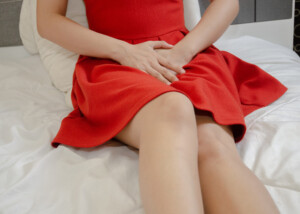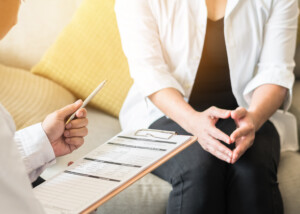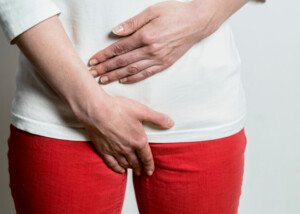
If you’re menopausal and find that you keep getting up overnight to use the bathroom, you may want to blame the menopause for this intrusion upon your sleep.
Yes, urinary function can be altered by menopause via the route of vaginal and urinary tract shrinkage – thanks to diminished production of estrogen.
It’s been commonly called urogenital or vaginal atrophy.
“Vaginal atrophy (now officially called genitourinary syndrome of menopause, or GSM) is a common contributing factor to overactive bladder,” says Michael Ingber, MD, board certified in urology, female pelvic medicine and reconstructive surgery, and founder of The Center for Specialized Women’s Health, division of Garden State Urology.
Furthermore, less estrogen means the bladder and urethra will become weaker which can lead to incontinence.
In addition to repeated overnight trips to the loo to relieve oneself, plus the daytime urge incontinence, menopause can also lead to the following problems:
• Stress-related incontinence—triggered by coughing, laughing or sudden movement.
• Increased daytime frequency
“Having the urgency to urinate and urinating frequently is a common problem women develop around and after menopause,” continues Dr. Ingber.
“Rarely, this can be due to how the kidneys function and produce urine. Also, dietary habits (e.g., excess caffeine, fluid intake) can play a role in urinary frequency and urgency.
“More commonly, however, this problem has to do with local problems with the bladder and vagina itself.”
Overactive Bladder and Menopause
Dr. Ingber says that 20% of the population has the so-called overactive bladder, in which the bladder – which is a muscle – spasms, signaling to the brain that it needs to be emptied.
“GSM occurs around menopause, when estrogen levels drop in the blood due to decreased production by the ovaries,” explains Dr. Ingber.
“When this occurs, the vulvar and vaginal mucosa (lining) get thinner, dryer, the pH increases (becomes more alkaline), and women are prone to dryness, discomfort with intercourse, urinary tract infections and overactive bladder.”
Is pre-existing “overactive bladder” necessary for increased peeing from “vaginal atrophy”?
“Overactive bladder is simply our term that describes women who urinate more frequently than what is considered normal,” says Dr. Ingber.
“Two-thirds of women are dry and just have to urinate frequently both day and night, and one-third of women are wet.
“This means they often have to wear a pad or change their underwear because they have an accident before reaching the toilet.
“We no longer think of them as separate conditions. They are interrelated and that is why whenever someone presents with a lack of vaginal estrogen, when they have urinary symptoms, we offer them treatment for the actual vaginal problem including vaginal hormone therapy or our novel MonaLisa Touch CO2 laser.
“This is also why we no longer use the term ‘vulvar and vaginal atrophy,’ but rather, ‘genitourinary syndrome of menopause.’”
Treatment for Frequent Overnight Urination from Menopause
“There are lots of treatments for this condition including exercise [Kegel], medical therapies and procedures that we do,” says Dr. Ingber.
“Because of this, vaginal hormone replacement can be an essential component of a woman’s pelvic health and quality of life.
“There are currently vaginal creams, tablets and even a ring which can be inserted. The goal of these therapies is really only to increase the vaginal health, not to increase blood levels of estrogens and affect the rest of the body.
“In general, these therapies are safe for most people, although, there may be a slight risk in women with a history of breast or endometrial cancer in taking these therapies.”
Fat loss and biofeedback can also help.
“There is now a SERM (non-hormonal oral therapy) called Osphena, which is a daily pill for women complaining of dryness during relations. This works very well.”
MonaLisa Touch – Just Five Minutes
“Lastly, there is a new non-hormonal option called the MonaLisa laser for atrophy,” says Dr. Ingber.
“This is an in-office therapy which takes five minutes, without pain, no anesthesia, which stimulates the vaginal tissue to produce collagen, thicken and restores the vagina to the premenopausal state.
“Several studies have shown benefit to the use of vaginal estrogen therapy for overactive bladder symptoms.
“There are a few studies which appear to show that the MonaLisa laser may also improve these symptoms.”

Dr. Ingber is board-certified in Urology and Female Pelvic Medicine & Reconstructive Surgery; is a Fellow of the International Society for the Study of Women’s Sexual Health. The Center for Specialized Women’s Health, division of Garden State Urology & Atlantic Medical Group.
specializedwomenshealth.com
(973) 537-5557
 Lorra Garrick has been covering medical, fitness and cybersecurity topics for many years, having written thousands of articles for print magazines and websites, including as a ghostwriter. She’s also a former ACE-certified personal trainer.
Lorra Garrick has been covering medical, fitness and cybersecurity topics for many years, having written thousands of articles for print magazines and websites, including as a ghostwriter. She’s also a former ACE-certified personal trainer.
.









































